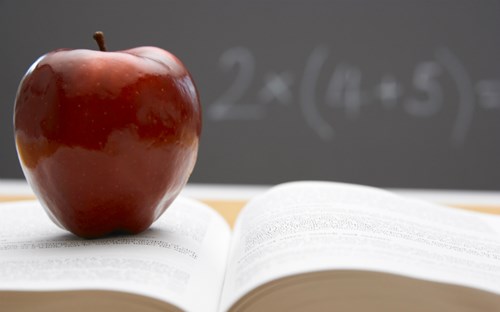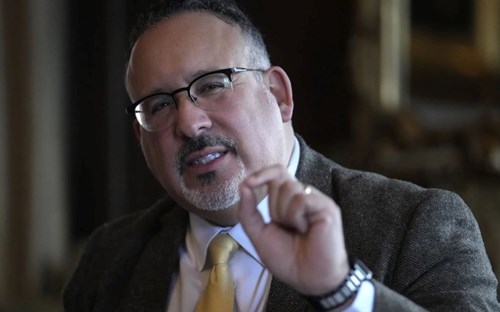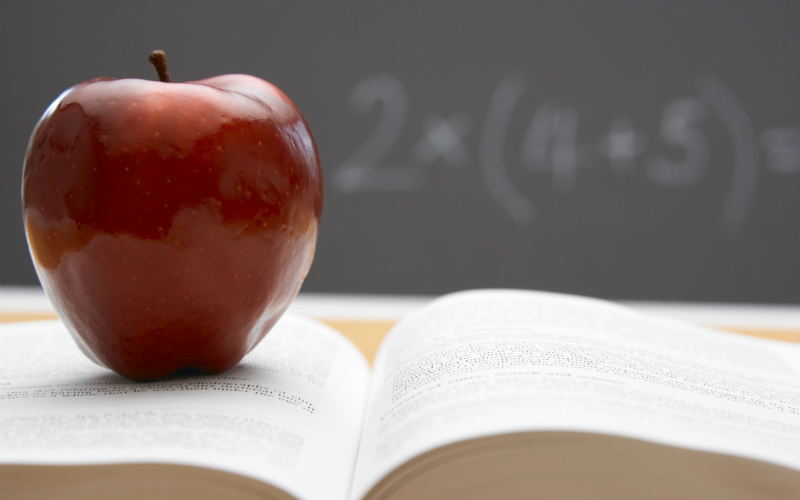A Back to School Bus Tour continued Wednesday with the U.S. Secretary of Education.  The tour runs through Sept. 6, and Secretary of Education Miguel Cardona said it's to "remind the American people why the Biden-Harris Administration has unapologetically fought for public education, the foundation of opportunity in this country, and the contrast between our efforts and those who wish to destroy public education.”
The tour runs through Sept. 6, and Secretary of Education Miguel Cardona said it's to "remind the American people why the Biden-Harris Administration has unapologetically fought for public education, the foundation of opportunity in this country, and the contrast between our efforts and those who wish to destroy public education.”
While the tour winds through U.S. roads, Title IX legislation winds through U.S. courts. Twenty-six states have filed suit, and the implementation of the new Title IX, which was to take affect on Aug. 1, has been blocked in many of them.
The new Title IX would allow males who present themselves as transgender to enter girls’ bathrooms and locker rooms, receive women’s scholarships and live in women’s dorms in schools that receive public funds.
It would also compel students and faculty to use “preferred pronouns” of any transgender-identifying individuals. For the bus tour, "I'm looking forward to lifting up what's working in public education and celebrating the exciting work taking place in our schools and communities to ensure that all students, no matter their race, place, or background, have opportunities to succeed and contribute to our country," Cardona said.
For the bus tour, "I'm looking forward to lifting up what's working in public education and celebrating the exciting work taking place in our schools and communities to ensure that all students, no matter their race, place, or background, have opportunities to succeed and contribute to our country," Cardona said.
Jonathan Butcher, Senior Research Fellow in Education Policy for The Heritage Foundation, told AFN that there are problems today in education.
"During the Biden administration, and frankly even before, dating back really to 2015, the scores for reading and math have been on the decline," Butcher said. "Scores on average across the country in reading and math in 4th grade and 8th grade which are the scores that are measured in the nation's report card, they are at or near historic lows."
Butcher added that reading matches historic lows dating back to the early 1990s.
"So, you know what we're talking about today is the outcome of the COVID pandemic when the Biden administration and their allies and teacher unions worked very hard to keep schools closed for extended periods. That has resulted in negative outcomes for students really across the spectrum,” Butcher said.
The growth of homeschooling
A new report from the Texas Home School Coalition shows that more than 50,000 students withdrew from public schools to begin homeschooling in the school years beginning in both 2022 and 2023.
“If you go back and calculate the total number of students Pre-K through 12, who were leaving the public school system to homeschool, before COVID it was a little over 30,000 a year. During COVID, it topped 80,000 and post COVID it’s been over 50,000, and it’s been holding there,” Jerry Newman, vice president of policy for the Texas Homeschool Coalition, said.
There are numerous factors for the rise in homeschooling, Newman said. Some are for academic reasons. Some are political, and not all of those are because of conservative-leaning parents.
“I see a continued increase, and it will also continue to kind of morph the demographic in the homeschool community. Homeschooling has become more and more the norm. It’s now by far the second-largest form of education in Texas,” Newman said.
Three-to-four percent of the school-going population in the U.S. is homeschooled, according to the most recent federal data.
As of February 2020, 9 million Americans had gone through homeschooling at least once.

Some people and politicians are in favor of increasing spending as a way of improving public education outcomes. However, Butcher said funding is not the problem.
"We're spending more after adjusting for inflation on education today than we ever have and the per student amount today is higher again in real terms than it ever has been, and we are just now at the end of the period where schools had COVID relief money to spend.”
That was no small amount of cash.
“It was a breathtaking amount of federal money, upwards of $190 billion in federal funds alone that was all given to states to deal with COVID-related issues. Schools in some cases simply could not find ways to use all of the money that Washington sent to them,” Butcher said.







